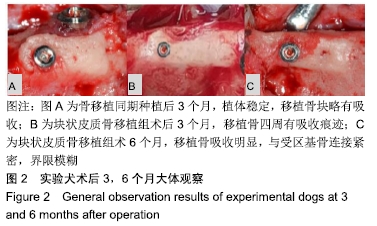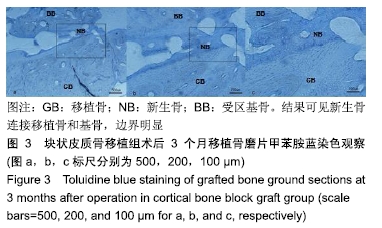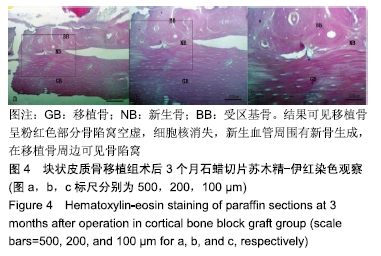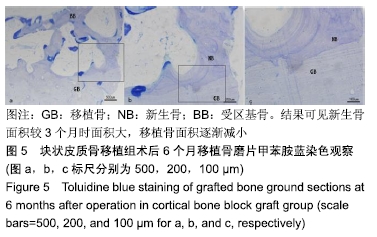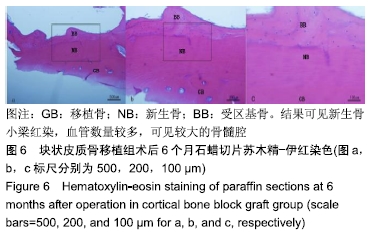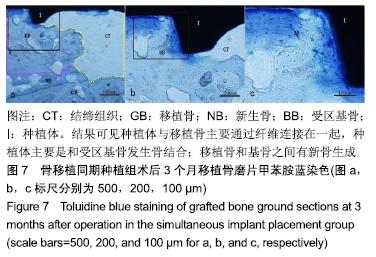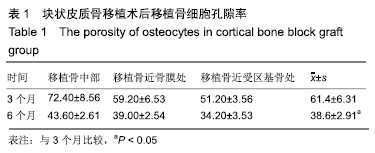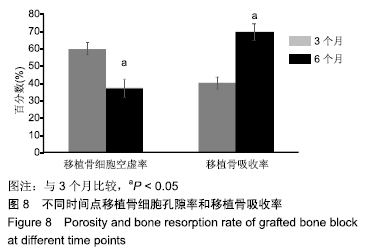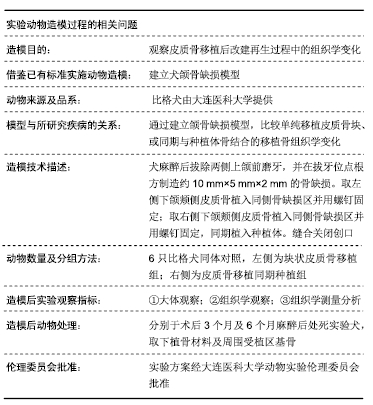[1] CHA HS, KIM JW, HWANG JH, et al. Frequency of bone graft in implant surgery.Maxillofac Plast Reconstr Surg. 2016;38(1):19.
[2] SAKKAS A, WILDE F, HEUFELDER M, et al. Autonomic bone grafts in oralimplantology-is it still a “gold standard”?A consecutive review of 279 patients with 456 clinical procedures.Int J Implant Dent. 2017; 3(1):23.
[3] OH KC, CHA JK, KIM CS, et al. The influence of perforating the autogenous block bone and the recipient bed in dogs.Part I: a radiographic analysis.Clin Oral Implants Res. 2011;22(11): 1298-1302.
[4] PHEMISTER DB. Bone growth and repair.Ann Surg.1935;102(2): 261-285.
[5] 林成,刘宝林,刘晓辉.非血管化游离髂骨移植血供重建的动物实验研究[J].临床口腔医学杂志,2007,23(7):387-389.
[6] DAYANGAC E, ARAZ K, OGUZ Y, et al. Radiological and Histological Evaluation of the Effects of Cortical Perforations on Bone Healing in Mandibular Onlay Graft Procedures.Clin Implant Dent Relat Res. 2016;18(1):82-88.
[7] CANEVA M, BOTTICELLI D, CARNEIRO MARTINS EN, et al. Healing at the interface between recipient sites and autologous block bone grafts affixed by either position or lag screw methods: a histomorphometric study in rabbits.Clin Oral Implants Res.2017; 28(12):1484-1491.
[8] FıNDıK Y, BAYKUL T. Effects of low-intensity pulsed ultrasound on autogenous bone graft healing. Oral Surg Oral Med Oral Pathol Oral Radiol. 2014;117(3):e255-260.
[9] ZHANG X, XIE C, LIN AS, et al. Periosteal progenitor cell fate in Segmental cortical bone graft transplantations: implications for functional tissue engineering.J Bone Miner Res.2005;20(12): 2124-2123.
[10] SHIROTA T, SCHMELZEISEN R, OHNO K, et al. Experimental reconstruction of mandibular defects with vascularized iliac bone grafts.J Oral Maxillofac Surg.1995;53(5):566-571.
[11] CONLEY J, CINELLI PB, JOHNSON PM, et al. Investigation of bone changes in composite flaps after transfer to the head and neck region. Plast Rec Surg.1973;51(6):658-661.
[12] JORDANA F, LE VISAGE C, WEISS P. Bone substitutes.Med Sci (Paris).2017;33(1):60-65.
[13] CHAPPUIS V, CAVUSOGLU Y, BUSER D. Lateral Ridge Augmentation Using Autogenous Block Grafts and Guided Bone Regeneration: A 10-Year Prospective Case Series Study.Clin Implant Dent Relat Res.2017;19(1):85-96.
[14] SEN MK, MICLAU T. Autologous iliac crest bone graft: should it still be the gold standard for treating nonunions?Injury. 2007;38 Suppl 1: S75-80.
[15] THÉS A, KLOUCHE S, TIENDA M, et al. Cortical onlay strut allograft with cerclage wiring of periprosthetic fractures of the humerus without stem loosening: technique and preliminary results.J Orthop Surg Traumatol.2017;27(4):553-557.
[16] ENNEKING WF, BURCHARDH H, PUHL JJ. Physical and biological aspects of Repair in dog cortical bone transplants.J Bone Joint Surg Am.1975;5(7):237-252.
[17] MOON KN, KIM SG, OH JS, et al. Evaluation of bone formation after grafting with deproteinized bovine bone and mineralizedallogenic bone.Implant Dent.2015;24(1):101-105.
[18] BAHEIRAEI N, NOURANI MR, MORTAZAVI SMJ, et al. Development of a bioactive porous collagen/β-tricalcium phosphate bone graft assisting rapid vascularization for bone tissue engineering applications.J Biomed Mater Res A.2018;106(1):73-85.
[19] CHEN B. Non-Vascularized Autogenous Bone Grafts for Reconstructionof Maxillofacial Osseous Defects.J Coll Physicians Surg Pak.2018;28(1):17-21.
[20] GEALH WC, PEREIRA CC, LUVIZUTO ER. Healing process of autogenous bone graft in spontaneously hypertensive rats treated with losartan: an immunohistochemical and histomorphometric study.J Oral Maxillofac Surg.2014;72(12):2569-2581.
[21] BUSER D, SCHENK RK, STEINEMANN S, et al. Influence of surface characteristics on bone integration of titanium implants.A histomorphometric study in miniature pigs.Biomed Mater Res. 1991; 25(7):889-902.
[22] WANG X, ZHANG Y, CHOUKROUN J, et al. Effects of an injectable platelet-rich fibrin on osteoblast behavior and bone tissue formation in comparison to platelet-rich plasma.Platelets.2018;29(1):48-55.
[23] ERMIS I,POOLE M.The effects of soft tissue coverage on bone graft Resorption in the craniofacial region.Br J Plast Surg.1992; 45(3): 26-29.
[24] 王玄,于卓力,纪楠,等.3D打印个性化截骨导板与传统截骨方法在全膝关节置换中的应用与比较[J].中国组织工程研究,2018,22(19): 3049-3054.
|

